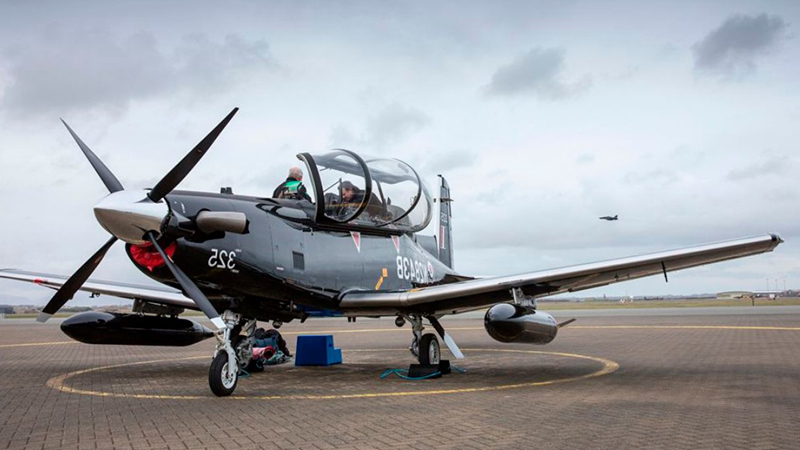

Image Courtesy: RAF
The UK government committed to net-zero carbon emissions by 2050. A considerable challenge involved in this is making zero-carbon aircraft for military use. Of course, we will see zero-carbon commercial aircraft, too, but that is a lesser concern for the government.
As part of its commitment, the RAF recently announced it would make its training fleet net carbon zero by 2040. While this is an impressive declaration, it does pose challenges.
By 2040, the RAF promises its light training aircraft will be net carbon zero at the point of use. To achieve this, it is already investigating more sustainable production methods and fuel sources, such as hydrogen and electric.
It has likely identified its training aircraft as a test site for this technology for several reasons. First, light training aircraft must meet set performance criteria but are not as demanding on fuel sources as conventional aircraft. It will therefore be easier to test technologies that might not yet work on larger aircraft.
Second, it makes sense that the RAF would train its next generation of pilots using electric or hydrogen aircraft. As we will (theoretically) see these in operation by 2050 at the latest, establishing training procedures early seems like a wise idea.
The challenges facing zero-carbon aircraft are no different from those currently facing eVTOL companies, which we have discussed in depth before. First and foremost, we are limited by current battery technology.
Lithium-ion batteries, in their current state, simply lack the energy density required for viable flight. While a short-range eVTOL can use battery cells, an RAF plane flies much farther, thus requiring more power.
Hydrogen fuel cells pose the problem of creating sizeable greenhouse gas emissions during production. While the RAF promises to be net-zero, using hydrogen would mean some serious carbon sequestration commitments elsewhere.
Then we have the challenge of transporting energy or producing it on-site. While this would be less of a challenge at RAF training bases, what will procedures be out in the field or on aircraft carriers? Could we expect an RAF base on a remote island, or in a warzone, to produce and store its own hydrogen or electric power? Probably not.
One solution to this problem would be something similar to Tesla’s giant batteries. But, this poses challenges of its own, as demonstrated by the recent four-day fire at a Tesla battery farm.
Charging points for electrical planes pose a similar logistical problem. Again, this will likely not be a challenge for the RAF’s training aircraft, as they remain at a single base. When we begin looking further afield, though, the same questions arise as energy transportation.
Presumably, the UK government either does not have answers to these questions or is keeping the information confidential. It is likely the latter, as the government has stated it is mining current technologies and requested civilian innovations relating to carbon-zero aircraft. If you have an idea, you can submit it here.
All this begs the question: is 2040 a viable date? For light training aircraft, yes, it is. It is an achievable target based on what the RAF is missing and how fast the industry can progress with the right funding and talent.
But, to then expect every other challenge to be resolved in ten years is perhaps unreasonable. However, considering how much eVTOL technology has progressed in the last decade, the UK might achieve its carbon-zero target after all.